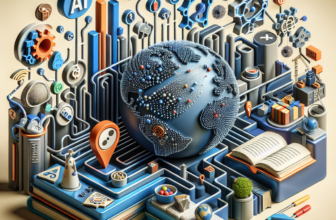Using Deep Learning to Enhance Image Generation in AI Technology

Using Deep Learning to Enhance Image Generation in AI Technology
Artificial Intelligence (AI) has significantly advanced in recent years, with deep learning being at the forefront of these advancements. Deep learning, a subset of machine learning, has been used to enhance various aspects of AI, including image generation. This has brought about a new wave of possibilities in the field of computer vision, as AI systems can now create realistic and detailed images from scratch.
One of the key techniques used in deep learning for image generation is Generative Adversarial Networks (GANs). GANs are a class of machine learning systems that consist of two neural networks – a generator and a discriminator – that work together to generate images. The generator creates images from random noise, while the discriminator evaluates the realism of the generated images. Through iterative training, the generator learns to create increasingly realistic images, while the discriminator becomes better at distinguishing between real and generated images.
Another popular technique for image generation in AI technology is Variational Autoencoders (VAEs). VAEs are a type of generative model that learns to reconstruct input images and generate new ones by encoding and decoding high-dimensional data. VAEs have been used to create visually appealing and realistic images, making them a valuable tool in the realm of AI-powered image generation.
Deep learning has also enabled the creation of style transfer techniques, where the style of one image can be applied to another, resulting in unique and artistic images. This has applications in various fields, including art, design, and entertainment, showcasing the potential of deep learning in pushing the boundaries of image generation in AI technology.
Enhancing Image Generation with Deep Learning
Deep learning has revolutionized image generation in AI technology by enabling the creation of highly realistic and detailed images. This has significant implications across various industries, such as healthcare, gaming, and advertising, where AI-generated images can be used for diagnostics, entertainment, and marketing purposes.
One of the key advantages of using deep learning for image generation is the ability to create diverse and novel images. Unlike traditional image generation techniques, deep learning models can produce a wide range of images with different styles, colors, and structures, making them highly versatile for various applications.
Furthermore, deep learning allows for the generation of images with intricate details and textures, resulting in visually appealing and lifelike representations. This level of realism is particularly valuable in fields such as virtual reality and augmented reality, where high-fidelity images are essential for creating immersive experiences.
Moreover, deep learning models can be trained on large datasets to learn and capture the nuances of different visual elements, such as shapes, patterns, and textures. This enables the generation of images that are not only realistic but also semantically meaningful, with the potential to accurately represent complex real-world scenarios.
Overall, the integration of deep learning in AI technology has significantly enhanced image generation capabilities, paving the way for a new era of visual content creation and interpretation.
FAQs
What is deep learning in the context of image generation?
Deep learning is a subset of machine learning that uses neural networks with multiple layers to learn and understand complex data representations. In the context of image generation, deep learning models are trained to generate realistic and detailed images from scratch, often using techniques such as GANs and VAEs.
How does deep learning enhance image generation in AI technology?
Deep learning enhances image generation in AI technology by enabling the creation of diverse, realistic, and highly detailed images. Through techniques such as GANs, VAEs, and style transfer, deep learning models can learn to generate visually appealing and semantically meaningful images, pushing the boundaries of what AI systems can create.
What are some applications of deep learning in image generation?
There are numerous applications of deep learning in image generation, including healthcare diagnostics, entertainment and gaming, virtual reality and augmented reality, design and advertising, and art and creativity. Deep learning-powered image generation has the potential to revolutionize visual content creation and interpretation across various industries.
Can deep learning models be trained to create specific types of images?
Yes, deep learning models can be trained to create specific types of images by providing them with labeled datasets that contain the desired visual elements. By training on specialized datasets, deep learning models can learn to generate images that meet specific criteria, such as medical images for diagnostic purposes or stylized images for artistic applications.
What are the challenges of using deep learning for image generation?
Some of the challenges of using deep learning for image generation include the need for large and diverse training datasets, the potential for overfitting and loss of diversity in generated images, and the computational resources required for training complex deep learning models. Additionally, ensuring the ethical and responsible use of AI-generated images is a growing concern in the field of image generation.
Overall, deep learning has significantly enhanced image generation in AI technology, opening up new possibilities for creating visually stunning and semantically meaningful images. As deep learning techniques continue to evolve, the potential for AI-powered image generation to transform various industries is boundless.







